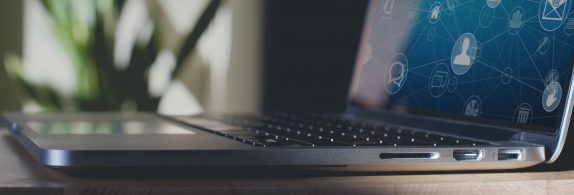Is healthcare ready for the IoT revolution?
The Internet of Things (IoT) in healthcare is nothing new, but as innovation continues to rapidly outpace adoption, the pressure is on the healthcare industry to become more responsive to digital change.
Benefits of adopting IoT in health
Recent figures released by Health Data Management revealed IoT-enabled asset tracking an inventory management in hospitals are set to double over the next two years globally.
At the same time, aggregation and integration of data thought IoT platforms will offer further opportunities to drive efficiencies within hospital operations, including reducing operational costs and enabling better human resource management.
In 2018, it is predicted we will continue to see the development of IoT-enabled medical devices. Patients and providers both stand to benefit from IoT, whether they’re using mobile medical applications or wearable devices to capture health data, or keeping tabs on the location of medical devices, personnel and patients.
And already, internet-connected devices have been introduced to patients in various forms. Whether data comes from fetal monitors, electrocardiograms, temperature monitors or blood glucose levels, tracking health information is vital for some patients.
Examples of adopting IoT to enable better healthcare include:
- Capturing, monitoring and managing patient data in more innovative ways
- Hospitals can take advantage of technology for real-time location services with badges that can track patients, staff and medical devices.
- Enabling better patient hospital flow via IoT
- Environmental monitoring -for example, checking the temperatures of refrigerators – and hand hygiene compliance.
- IoT in healthcare may also offer a way to tighten budgets and improve a patient’s journey through a medical facility.
- Effectively capturing patient data and offering hospital IT departments opportunities to gain insights to other areas of the hospital.
- Some hospitals in the US have begun implementing “smart beds” that can detect when they are occupied and when a patient is attempting to get up.
- Smart technology could be coupled with home medication dispensers to automatically upload data to the cloud when medication isn’t taken or any other indicators for which the care team should be alerted.
- Managing clinical workflow more intelligently
A recent report released by by TechTarget, A Guide to Healthcare IoT Possibilities and Challenges, revealed while varied applications of IoT in healthcare involve the use of popular technology topics such as big data, cloud, predictive analytics and machine learning, those subjects cover only part of how the Internet of Things can be deployed. When adopted using the right frameworks and IT infrastructure, IoT holds the potential to enrich the healthcare industry and other vertical markets now and in the years to come.
Challenges in adopting IoT in health
Rapid progression of healthcare IoT, or the Internet of Medical Things, is not without its challenges – especially given some physicians and health IT departments are still adjusting to using and securing mobile devices during work, let alone more complex devices.
IoT challenges in health include:
- The danger of becoming too dependent on machines
- Having back up systems in place in the event of machine break down/upgrade
- Overloading physicians with too much data
- Concerns around data privacy and security
The report revealed some technology analysts still consider IoT a disruptive technology and are concerned with its level of data security and its ability to meet healthcare compliance requirements.
In particular, big data in healthcare will open up the opportunity to leverage vast amounts of data to healthcare organisations and providers, allowing them to get deeper insights and ultimately enable improved patient care and better outcomes. But at the same time, opening up the possibilities of big data can possibly create security vulnerabilities.
Meanwhile when it comes to privacy and security challenges, the report highlighted IoT will add an extra layer of complexity where you are dealing with networks that operate outside of the secure networks of healthcare facilities, such as medical device connected to home networks, public Wi-Fi, or cellular signals.
This means there has to be deeper levels of security parameters for IoT to be functional and safe in healthcare. The report also suggested the future of IoT in healthcare may hinge on resolving those concerns and maximising IoT’s core benefits, such as immediacy, transparency and price point.
Interoperability and a new connected health network
The report recommended that in order for healthcare to leverage the power and potential of IoT, that there needs to be a robust, network of machines that work in a state of interoperability together and are connected to a secure cloud environment.
“There’d be technologies that alert us of systems that are in danger of failing, or specific machines or devices that are in danger of failing, and that way – we have this connected network of an intelligent healthcare system that is essentially never down,” the report stated.
But a lack of interoperability only adds more barriers to capturing data and making sure information is accurate, the report stressed. With dozens, if not hundreds, of different device manufacturers coming up with the latest ‘shiny new toy’, the challenge now is ensuring that these devices can effectively talk to each other and send the right message, at the right time in a robust, secure IT framework.









